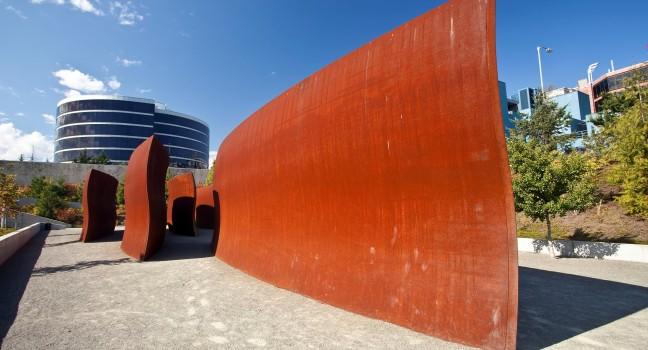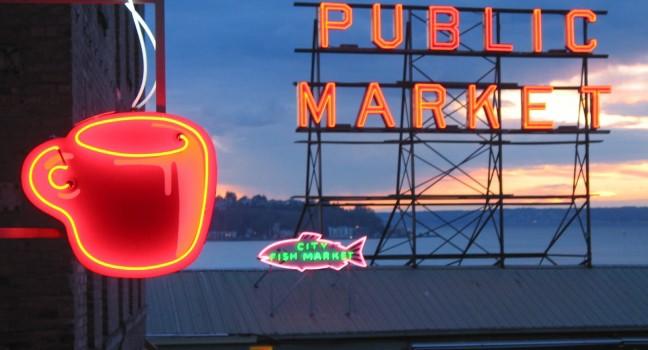Hiram M. Chittenden Locks

There's no doubt—there's something intriguing and eerie about seeing two bodies of water, right next to each, at different levels. The Hiram M. Chittenden Locks (also known as "Ballard Locks") are an important passage in the 8-mile Lake Washington Ship Canal that connects Puget Sound to freshwater Lake Washington and Lake Union. In addition to boat traffic, the Locks see an estimated half-million salmon and trout make the journey from saltwater to fresh each summer, with the help of a fish ladder.
Families picnic beneath oak trees in the adjacent 7-acre Carl S. English Botanical Gardens; various musical performances (from jazz bands to chamber music) serenade visitors on summer weekends; and steel-tinted salmon awe spectators as they climb a 21-step fish ladder en route to their freshwater spawning grounds—a heroic journey from the Pacific to the base of the Cascade Mountains.
In the 1850s, when Seattle was founded, Lake Washington and Lake Union were inaccessible from the tantalizingly close Puget Sound. The city's founding fathers—most notably, Thomas Mercer in 1854—began dreaming of a canal that would connect the freshwater lakes and the Sound. The lure of freshwater moorage and easier transport of timber and coal proved powerful, but it wasn't until 1917 that General Hiram M. Chittenden and the Army Corps of Engineers completed the Lake Washington Ship Canal and the locks that officially bear his name. More than 90 years later, the Locks are still going strong. Tens of thousands of boaters pass through the Locks each year, carrying more than a million tons of commercial products—including seafood, fuel, and building materials.
Guided tours of the Locks are available departing from the visitor center; however, plaques by the locks will give you plenty of information if you don't have time for a tour.





